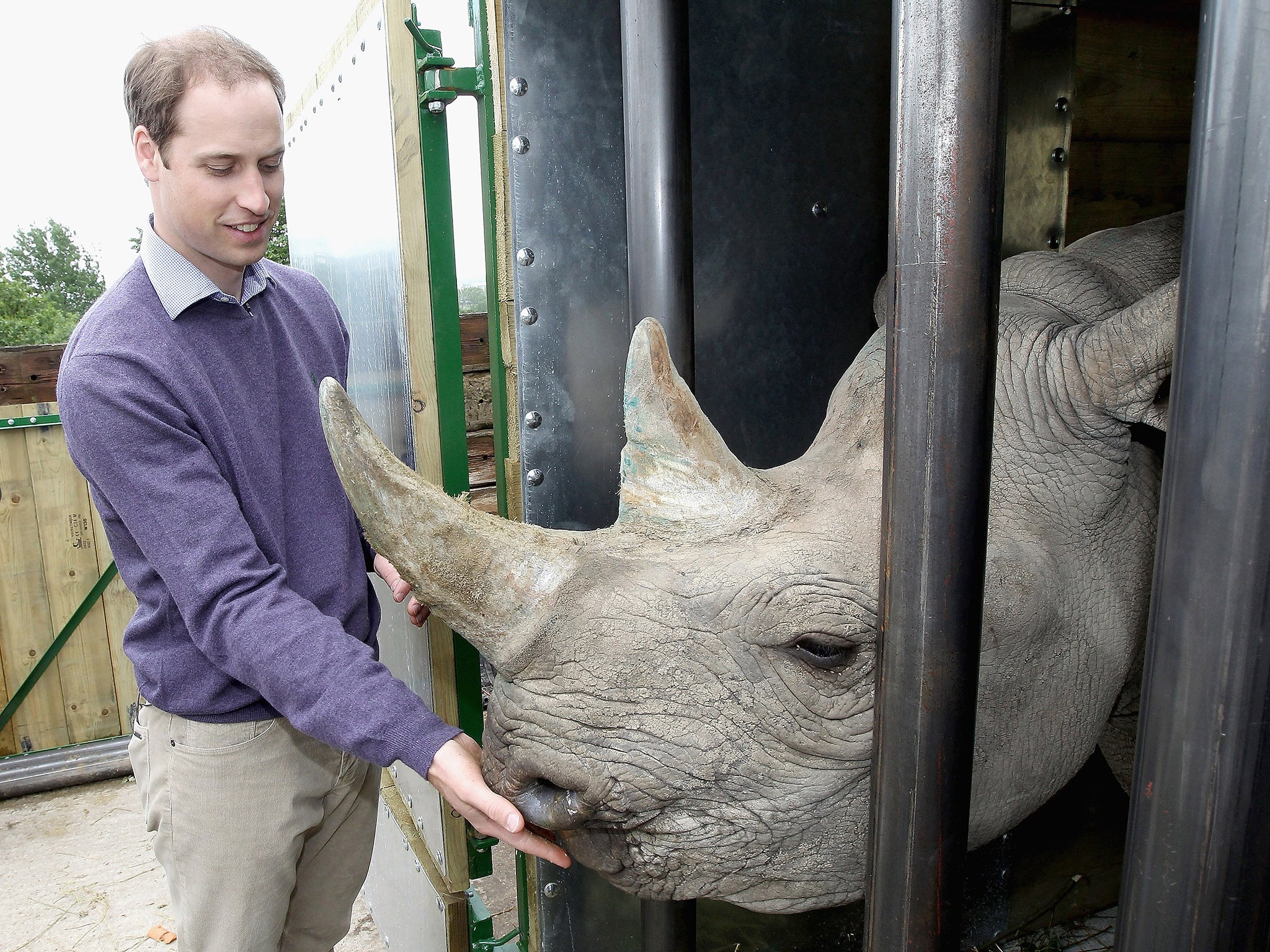Prince William is talking sense – trophy hunting is crucial to conservation
A few individuals legally hunted each year is a small price to pay for the transformative benefits trophy hunting brings

Well done, Prince William. He is talking sense. As hard as it is to comprehend that killing animals can be integral to their survival, the fact remains: without trophy hunting, many of Africa’s iconic species would be worse off.
In South Africa and Namibia hunting has played a role in the significant expansion of wildlife outside Parks. Limited hunting has been credited with helping to encourage the increase in southern white rhino range and numbers.
When hunting started in 1968 there were only 1,800, but today there are over 19,230 white rhino in South Africa and Namibia which annually hunt small numbers of white and black rhino, and which currently conserve 94.4% of the species. A third of white rhinos in South Africa are now conserved on private and community land outside state parks. Numbers of black rhino have also increased by 52% in these two countries (up to 3,840) since the approval of small annual hunting quotas.
The reasons for this are manifold. Healthy game populations, tourism spectacles and lodges don’t just fall out of the sky at no cost. Hunting can help generate the cash flow to help pay for protection, growing game numbers and building tourism infrastructure. Hunters also venture to the remotest areas or ones without spectacular scenery. Here closely regulated, ethical hunting can provide livelihoods and a good revenue stream – and importantly an incentive to maintain wildlife – for people living outside the tourism trail. In other words, hunting gives wildlife value for those who live in it. By contrast wildlife numbers outside parks have declined in Kenya since it banned hunting.
A South African private reserve, which can’t be named for security reasons, provides an illustrative case study, Like many reserves, it receives no government grant and its conservation efforts have to be self-funded. This reserve has been a conservation success story with strong growth in numbers of many species over the years including white rhino and elephant. Hunting of small numbers of big game have been absolutely integral to its success by contributing the most towards funding its conservation efforts. From 2000-2010, limited big game hunting contributed over three times more income than tourism to fund protection and conservation efforts.
The reserve has a policy that all proceeds from rhino hunting must be spent on rhino conservation. For example, the killing of two old white rhino in 2012 paid for 49% of a $377,000 high tech security fence upgrade along a vulnerable border. Now, when there is a breach, anti-poaching units are alerted and rapidly deployed greatly enhancing the security of rhinos in the reserve.
As the numbers who practice trophy hunting are so small, its environmental impact is actually very low compared to ecotourism, which attracts a much greater volume of people. With minimum impact and maximum revenues, it must be welcomed by those who are serious about conserving Africa’s wildlife.
Provided it is correctly regulated and conservationists are strategic about animals selected for hunts, hunting itself can directly stimulate population growth. If, for example, a dominant male is infertile, his death can allow more bulls to move in and impregnate females in the area.
Hunting isn't, however, without its problems. Often the hunting industry could do better at policing what is going on and there are unethical practices that need to be stopped such as canned hunting. In 2010 and 2011 there was also an increase in numbers of “pseudo-hunters” from Vietnam who sought white rhino hunting permits in South Africa with the intention of obtaining and exporting rhino horn to illegal markets in South East Asia. Hunting applications peaked in 2011(231), but following law changes in 2012 the problem has mostly been dealt with, and applications have returned to normal levels. In 2015, 62 white rhino and only 1 black rhino were hunted in the whole of South Africa representing less than a third of a percent of total rhino numbers in the country.
A few individuals legally hunted each year is a small price to pay for the transformative benefits that trophy hunting brings. The public may recoil at pictures of rich white men beaming beside the corpses of felled rhinos and lions. These reactions are understandable. But the welfare of entire communities and ecosystems surely trumps any queasiness grounded in sentimentality.


Join our commenting forum
Join thought-provoking conversations, follow other Independent readers and see their replies